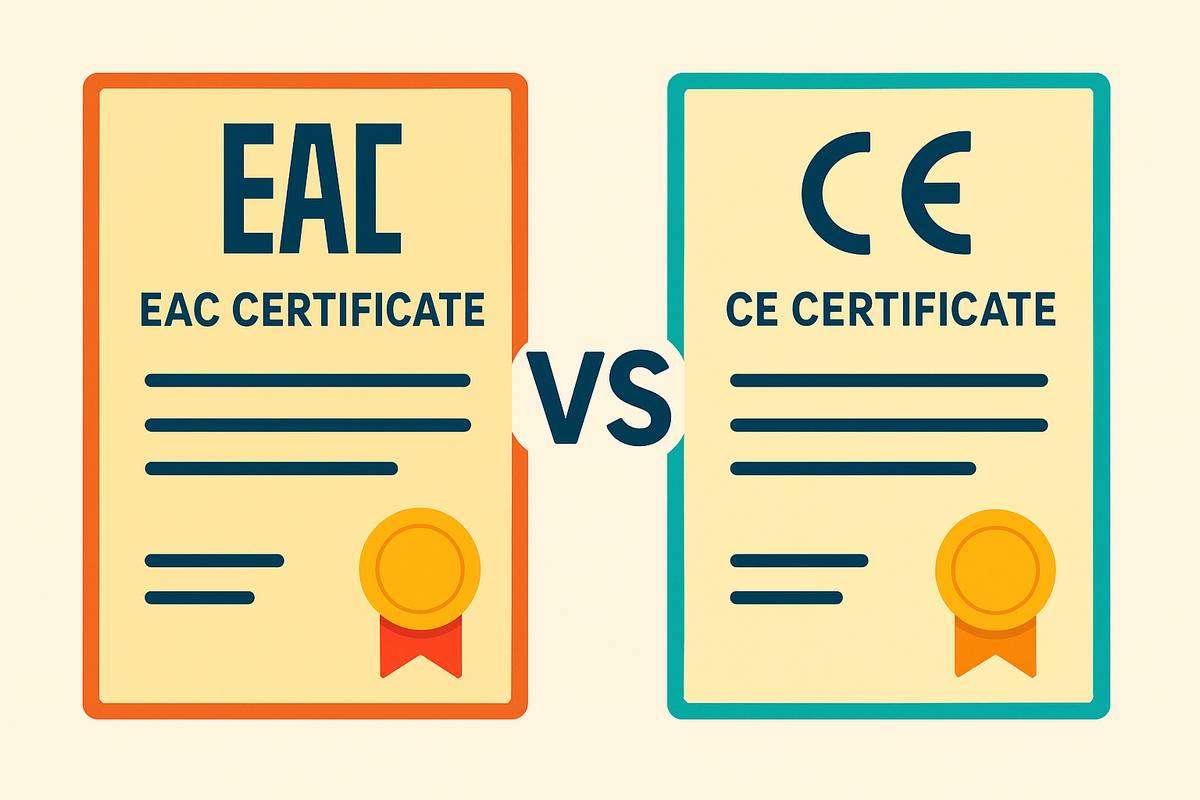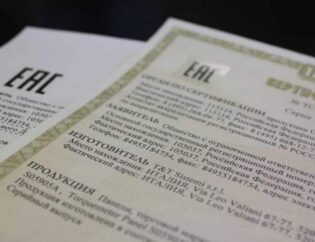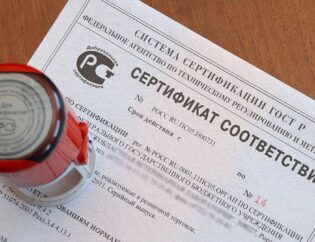May 7, 2025

Differences Between EAC Certificate and CE Marking
The EAC certificate and the CE marking are two essential conformity marks that demonstrate a product's compliance in international markets. However, they apply to different geographical regions and are subject to different regulations and processes. Below is a summary of the key differences between the EAC certificate and the CE marking:
1) Geographical Scope
- EAC Certificate: Valid in the countries of the Eurasian Economic Union (EAEU): Russia, Belarus, Kazakhstan, Armenia, Kyrgyzstan.
- CE Marking: Valid in European Union (EU) countries and the European Economic Area (EEA).
2) Legal Basis and Regulatory Bodies
- EAC Certificate: Governed by Technical Regulations (TR CU / TR EAEU) and the regulations of the Eurasian Economic Commission.
- CE Marking: Based on the EU's New Approach Directives and related EU regulations (e.g., MDR, LVD, EMC, CPR).
3) Conformity Assessment Process
- EAC Certificate: Involves product testing, technical reviews, and, in some cases, factory inspections according to the relevant technical regulations.
- CE Marking: The process varies by product category, and the manufacturer may use a self-declaration of conformity (DoC) for some products; higher-risk products may require an assessment by a Notified Body.
4) Product Categories
- EAC Certificate: Covers a wide range of products including machinery, electrical equipment, food, textiles, chemicals, medical devices, etc. (depending on the relevant TR CU/TR EAEU regulations).
- CE Marking: Required for toys, construction products, medical devices, electrical/electronic products, machinery, and other regulated products (according to the relevant EU directives/regulations).
5) Marking and Certification
- EAC Certificate: Once compliance is confirmed, the EAC mark is applied to the product and/or packaging, and relevant registration and documentation are issued.
- CE Marking: Once compliance is confirmed, the CE mark is applied to the product and/or packaging, and the manufacturer prepares an EU Declaration of Conformity (DoC) and keeps the technical file.
6) Validity Period of the Certificate
- EAC Certificate: Typically valid for 1-5 years, depending on the regulation and product type; one-time (for a specific shipment) certificates are also available.
- CE Marking: Not limited by a specific "time period"; the product must continue to comply with applicable regulations and updated standards as long as it remains on the market. If regulations or standards change, the technical file and declaration must be updated.
7) Mutual Recognition
- EAC and CE marks do not substitute for each other. Compliance in one market does not automatically grant validity in the other. Each market requires compliance with its own specific regulations.
Summary
- What is the EAC Certificate? A mark demonstrating compliance with technical regulations for EAEU countries.
- What is the CE Marking? A mark demonstrating compliance with health, safety, and environmental requirements for the EU/EEA market.
- EAC vs. CE: Differences in geography, legal basis, assessment modules, marking, and validity.
- Mutual Recognition: There is no mutual recognition; each market requires separate compliance.







